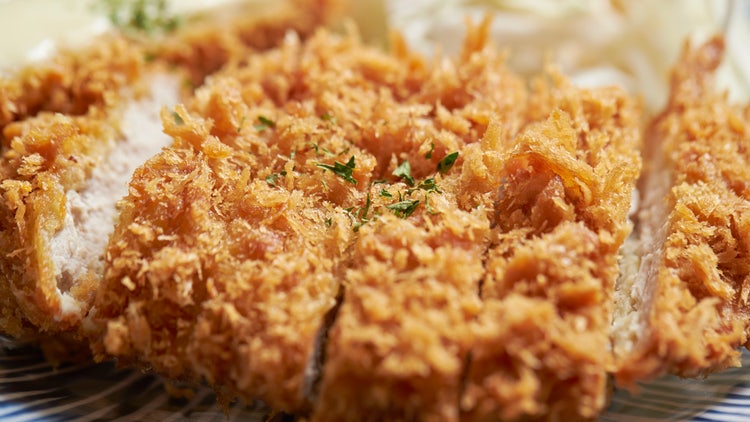
When it comes to food, taste isn’t the only factor that matters to consumers; texture plays a crucial role in enhancing the overall flavor experience. Ingredion's 2024 Texture Research study revealed that 79% of consumers agree or our neutral that texture is a determining factor in the overall satisfaction of the eating experience. Additionally, the study found that 52% of consumers would not eat a food if they didn't like the texture.
Two key textures to master are crispy and crunchy. Although they might seem similar, they offer distinct sensory experiences that consumers prefer. The bite, snap and even the sound differ between these two texture characterizations.
Understanding crispy and crunchy
To create products that meet consumer expectations, it’s essential to understand the technical and perceptual differences between crispy and crunchy textures. Ingredion’s texture consumer research study shows that consumers prefer crispy and crunchy textures in their food, and our diverse portfolio — from starches and protein flours to hydrocolloids and more — can significantly affect whether a food ends up crispy or crunchy during preparation and provide the pleasing sensory experience consumers look for.

Crispy refers to a texture that is firm and brittle, often breaking easily with a light bite. Crispy foods, typically associated with products like fried chicken or potato chips, require less force to break apart and have a light, airy layer that gives way to a softer interior.
Crunchy describes a texture that is harder and more substantial (thicker) than crispy. Crunchy foods, such as nuts or granola, require more force to break apart and often have a denser structure.
The sensory science of texture
Texture is a multisensory experience involving sound, bite and feel, and the complexity behind creating foods with great perceived texture is immense. Understanding texture is crucial in food science, as it involves complex processes from the molecular structure to the oral experience, significantly impacting the perceived quality of food. Each stage, from the arrangement of food components to molecular interactions, requires deep technical knowledge to achieve the desired texture.

Ingredient functions behind texture
The ingredients used in formulations can directly impact texture. Starches, fibers and proteins can play crucial roles in creating the desired structure for food products.
- Starches: Starches can enhance crispiness and crunchiness, extend shelf life, reduce waste and maintain product integrity
- Fibers: Fibers can add health benefits and improve oil binding and water-holding capacity in various products, including meat, baked goods and cereals
- Proteins: Plant-based proteins can smooth out gritty textures in protein bars, increase softness in tortillas and mimic classic textures in vegan alternatives
- Hydrocolloids: Hydrocolloids improve food texture by modifying viscosity, stabilizing emulsions and forming gels that enhance mouthfeel and consistency
Texture by application
Crispy and crunchy textures can be incorporated into various applications. While you might typically associate these textures with snack foods, they are also well-suited for fried foods and bakery products.

Snacks
Snacks are ideal for developing crispy and crunchy texture. Using a starch like PRECISA® Crisp in sheeted snacks like baked chips can provide either a light and crispy texture or a hard and crunchy one. In granola bars, the binding syrup makes all the difference in the graininess of the bar as well as the fracturability. Remember that consumers associate satisfaction with the right amount of bite required in a chewy or crunchy food. A granola bar with the right texture should result in an even bite all the way through.
Coated and fried foods
Crispiness isn't just important in snack products, it's also a must-have in batters and breadings, delivering a clear coating with no sticking and a consistent crunchy texture in fried meats.


Bakery
Different baked goods require different textures. Crispy cookies, for instance, need a clear snap from a drier formulation, while chewy cookies need more moisture to provide a softer texture. Utilizing the right ingredients offers better control over water concentration and the final texture you want to deliver to consumers.
Solving texture challenges
Consumers prefer crispy and crunchy foods, but achieving these textures can be challenging. Here are solutions to a couple of common formulation issues:
- Sogginess: Consumers want lasting crispy textures whether they're ordering fried chicken via takeout or sitting down at a restaurant to enjoy a plate of fries. The secret to avoiding sogginess is to create an optimized coating system that maximizes hold time and heat lamp stability. The right blend of starches, hydrocolloids and texturizing fibers can contribute to the right level of texture enhancement in food.
- Texture loss during freeze/thaw: Frozen food products need to stay crispy or crunchy from the time of purchase to the time they're heated up for dinner. Ingredion's starches are also helpful in maintaining structural integrity during the freeze-thaw process.
Practical tips for formulators
Crafting the perfect crispy or crunchy formulation requires a thoughtful strategy throughout the production process. These three tips can set you up for success, whether you’re creating a new product or revamping an existing one.
- Consider texture from the beginning: Consumer research shows that texture shouldn't be an afterthought in your formulation process; choose ingredients based on your desired texture outcomes early on
- Match texture goals to application type and cooking methods: Different ingredients have strengths in achieving crispiness or crunchiness, depending on their application
- Labeling implications: Balance texture preferences with label priorities, such as clean ingredients, non-GMO or no required allergen declaration
Future of texture innovation
Brands can look forward to a number of emerging innovations and trends surrounding texture that produce better results while also allowing for cross-category opportunities in health and nutrition.
Next-generation starches are derived from a variety of sources, including tapioca, potato, pea and rice. Each one comes with different benefits and capabilities when it comes to texture and finish.

Want to incorporate health-focused labels into your products? Ingredion's functional native starches allow for simple ingredient listings such as corn starch and potato starch. They're perfect for clean label products and many are also available in non-GMO options. You can also find options that are gluten-free or entirely plant-based to bring that crispy or crunchy texture to a broader consumer base.
Incorporating the right crispiness or crunchiness levels in food products enhances the consumer experience with every bite. Ensure texture success in your formulations by exploring Ingredion's solutions for frozen, fresh, shelf-stable products and more.
For customized support, contact Ingredion for expert insights and collaboration.
Meet the expert
Related content and resources
Texture goes beyond the bite. Explore the science, insights, and innovations that shape how consumers experience every crisp, crunch and chew.

The Texture Equation℠
Learn how Ingredion helps brands decode texture to deliver creamy, crispy, chewy or crunchy experiences that drive consumer preference.

Clean label ingredients
Deliver products with clean, recognizable ingredients that support the textures consumers prefer.
Sources:
¹. https://www.foodrepublic.com/1559986/crispy-vs-crunchy-texture-difference
*Product availability and costs may vary across global regions. Contact an Ingredion representative to learn more.